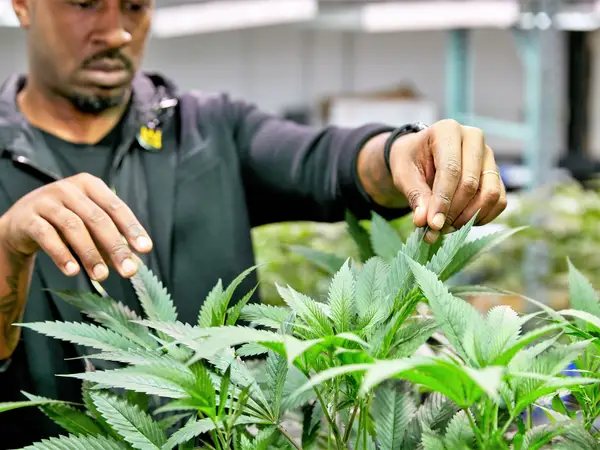As the stigma surrounding cannabis continues to decline, more and more retired athletes are making their way into the cannabis industry. These former sports stars, once bound by strict league rules prohibiting cannabis use, are now embracing it as a business opportunity and a personal wellness tool. From founding cannabis companies to advocating for medicinal use, athletes are using their platform to promote the benefits of cannabis and break down long-standing taboos in sports.
Why Athletes Are Turning to Cannabis
Many retired athletes have turned to cannabis for pain management, recovery, and mental wellness after years of enduring the physical and mental strain of professional sports. Traditional pain medications, particularly opioids, have long been prescribed to athletes to manage chronic pain from injuries and rigorous training. However, these medications come with significant risks, including addiction and long-term health issues.
Cannabis, particularly CBD (cannabidiol), has emerged as a natural alternative to opioids, offering pain relief without the addictive properties. Athletes have found that cannabis helps manage conditions like joint pain, inflammation, and even mental health challenges like anxiety and depression. With cannabis now legal for medical or recreational use in many states, athletes can explore its benefits without the fear of violating league rules.
Leading the Way: Athletes in the Cannabis Industry
Several high-profile athletes have not only become cannabis advocates but also entrepreneurs in the industry. Former NFL stars like Ricky Williams and Rob Gronkowski, NBA players such as Al Harrington, and UFC fighters like Nate Diaz have publicly endorsed cannabis and CBD products. Some of them have even launched their own cannabis brands, aiming to provide safe, effective products to consumers who are looking for natural solutions to pain and recovery.
For example, Al Harrington, a former NBA player, founded Viola, a cannabis company that produces a range of products including flower, extracts, and topicals. Harrington, like many athletes, discovered cannabis’s medicinal benefits after retiring and dealing with lingering injuries. His company is now a significant player in the cannabis space, emphasizing education and community outreach.
Similarly, Ricky Williams, who faced suspension during his NFL career due to cannabis use, now runs Real Wellness, a brand focused on herbal wellness products that combine cannabis with other natural ingredients. His journey from being criticized for cannabis use to becoming an advocate and businessman reflects the changing attitudes toward cannabis in sports and society.
Advocating for Change
Many retired athletes have also taken on the role of advocates, pushing for changes in league policies surrounding cannabis use. Athletes argue that cannabis offers a safer alternative to opioids and other prescription medications, which are still widely used in professional sports for pain management. They are calling for leagues like the NFL, NBA, and UFC to update their policies and allow active players to use cannabis for therapeutic purposes.
The NBA, in particular, has begun to soften its stance on cannabis. The league no longer randomly tests players for cannabis use, signaling a shift in how sports organizations view the plant. This change is largely due to the efforts of retired players who have openly discussed their cannabis use and its positive effects on their health.
Cannabis Entrepreneurship: A Booming Industry
For retired athletes entering the cannabis industry, it’s not just about advocacy—it’s also about business. The cannabis market is booming, with legal sales in the U.S. expected to exceed $30 billion by 2025. Athletes are capitalizing on their public profiles and credibility to launch cannabis ventures, including dispensaries, cultivation facilities, and product lines.
One key area of growth is the cultivation of high-quality cannabis, which is critical for creating effective products. Athletes who venture into cannabis growing must understand the importance of monitoring plant health and trichome development. For those new to cultivation, learning how to identify the different stages of trichome development is essential. Trichomes contain the cannabinoids that provide the therapeutic benefits of cannabis, and timing the harvest correctly ensures a potent product. To dive deeper into this aspect of cultivation, you can explore resources like this guideon the best magnifiers to identify trichome stages – https://2fast4buds.com/us/news/the-best-magnifiers-to-identify-trichomes-stages , which offers helpful insights for those looking to perfect their cannabis crops.
The Future of Cannabis in Sports
As more retired athletes enter the cannabis industry, their influence is helping to reshape the narrative around cannabis use in sports. These athletes are not only business leaders but also role models for current and future players, showing that cannabis can be a safe and effective tool for managing the physical and mental challenges of athletic life.
With more athletes speaking out, we may soon see professional leagues adopt more progressive cannabis policies, allowing players to use cannabis without fear of punishment. This shift could further open the door for cannabis use in sports, both as a wellness tool for athletes and as a booming business opportunity for those transitioning out of professional sports.
Conclusion
The cannabis industry offers retired athletes a unique opportunity to combine their personal experiences with business acumen. As they advocate for change, launch companies, and promote the benefits of cannabis, these athletes are playing a crucial role in reshaping public perceptions of cannabis. Whether it’s through entrepreneurship, advocacy, or cultivation, retired athletes are helping to drive the cannabis industry forward while improving their own well-being and the lives of others.

